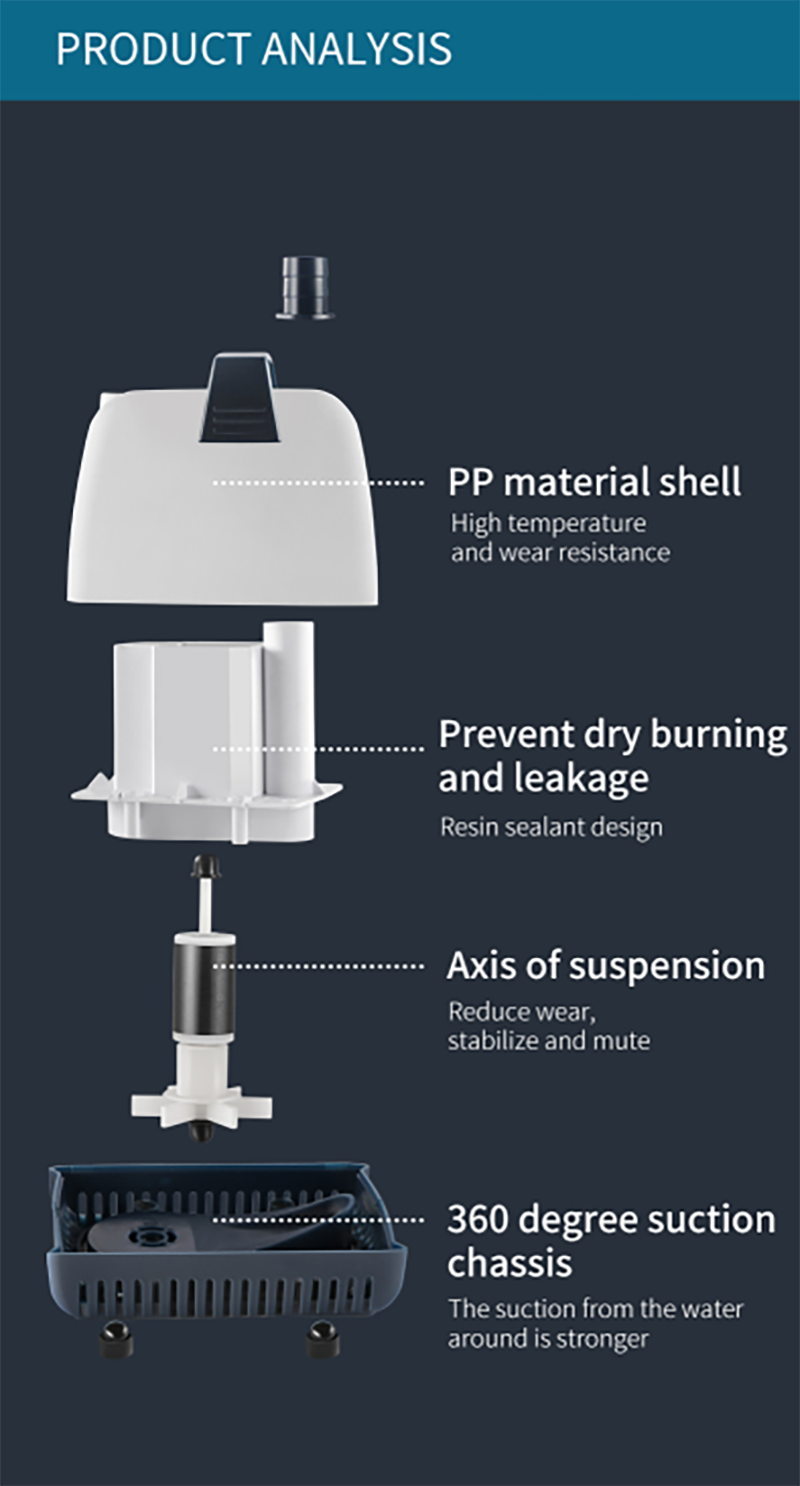Are you a proud fish owner looking to create the ideal aquatic environment for your underwater pets? Or perhaps you’re a newcomer to the world of fish keeping, eager to set up a stunning fish tank that thrives with life? Either way, you’ve come to the right place! At Jingye company, we understand that a well-functioning aquarium pump is the cornerstone of a healthy and vibrant fish tank. That’s why we’ve put together this comprehensive guide to help you choose the perfect aquarium pump for your needs.
Key Features to Look for in an Aquarium Pump
When it comes to choosing an aquarium pump, there are several key features you should consider to ensure you’re getting the best possible product for your fish tank:
1. Flow Rate
The flow rate is the amount of water the pump can move in a given period, usually measured in gallons per hour (GPH) or liters per hour (LPH). The ideal flow rate depends on the size of your fish tank. As a general rule, the pump should be able to circulate the entire volume of water in your tank at least four to six times per hour. For example, if you have a 50-gallon tank, you’ll need a pump with a flow rate of at least 200-300 GPH. However, if you have a heavily planted tank or are housing certain species of fish that prefer calmer water, you might want to opt for a slightly lower flow rate.
2. Type of Pump
Submersible pumps are placed directly inside the fish tank, making them convenient and easy to install. They are also relatively quiet and can help to heat the water slightly, which can be beneficial in some cases.
3. Noise Level
A noisy pump can be a major annoyance, not just for you but also for your fish. Fish are sensitive to noise and excessive noise can stress them out, leading to health problems. Look for a pump that is specifically designed to operate quietly. Many modern pumps come with advanced noise-reducing features, such as rubber feet or special housing designs, to minimize vibrations and noise.
4. Durability and Reliability
You want a pump that will stand the test of time and keep your fish tank running smoothly without constant maintenance or replacements. Look for a pump made from high-quality materials, such as stainless steel or durable plastic, that can withstand the corrosive nature of water. Check for customer reviews and ratings to get an idea of the pump’s reliability and longevity.
5. Energy Efficiency
Running an aquarium pump 24/7 can add up on your electricity bill, so it’s important to choose an energy-efficient model. Look for pumps with energy-saving features, such as adjustable speed settings or automatic shut-off functions when not in use. Not only will this help you save money, but it’s also better for the environment.
How to Install Your Aquarium Pump
Once you’ve chosen the perfect pump for your fish tank, it’s time to install it. Here are some simple steps to guide you through the process:
For Submersible Pumps:
- Clean the Pump: Before installing, rinse the pump thoroughly with clean water to remove any dust or debris.
- Position the Pump: Place the pump at the bottom of the tank, preferably in a corner or behind decorations to keep it out of sight. Make sure it’s fully submerged and not obstructing water flow.
- Attach the Tubing: If your pump is connected to a filter or other equipment, attach the tubing securely to the pump’s outlet.
- Plug It In and Test: Plug the pump into a power source and turn it on. Check for any leaks or unusual noises and ensure the water is circulating properly.
Tips for Maintaining Your Aquarium Pump
To keep your aquarium pump running smoothly and prolong its lifespan, follow these simple maintenance tips:
- Regular Cleaning: Clean the pump and its components at least once a month to remove any accumulated debris or algae. For submersible pumps, simply remove them from the tank, rinse with clean water, and gently scrub away any buildup. For external pumps, follow the manufacturer’s instructions for cleaning the intake and output screens.
- Check for Leaks: Regularly inspect the tubing and connections for any signs of leaks or wear. Replace any damaged tubing immediately to prevent water loss or contamination.
- Monitor the Flow Rate: Periodically check the flow rate of your pump to ensure it’s still operating at the desired level. If you notice a significant decrease in flow, it may be time to clean the pump or replace any clogged components.
- Keep It Dry: When not in use, store the pump in a dry, cool place to prevent damage from moisture or extreme temperatures.
If you have any questions or need further assistance in choosing the right aquarium pump, feel free to contact our website https://www.jingyeaquarium.com/. We’re always here to help you create the perfect aquatic paradise for your fish.
Post time: Apr-28-2025

